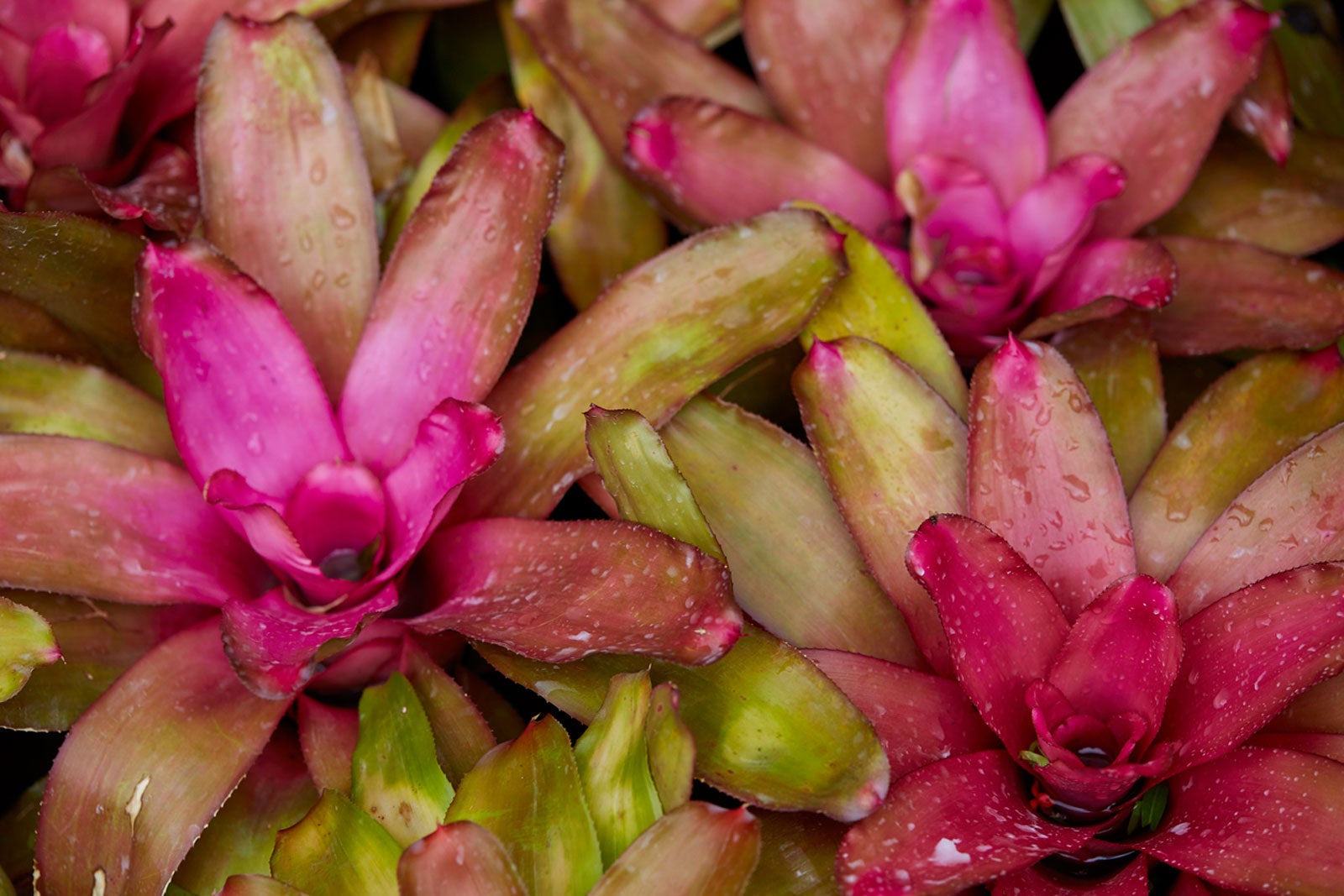Neoregelia Bromeliad Facts – Learn About Neoregelia Bromeliad Flowers


Neoregelia bromeliad plants are the largest of the 56 genera into which these plants are categorized. Possibly, the showiest of bromeliads, their colorful leaves produce brilliant shades when located in a bright light situation. Although some grow without direct sun, most require full sun for the best color. Identify your specific bromeliad and research which lighting is most appropriate for it.
Neoregelia Bromeliad Varieties
Diverse and interesting patterns of the Neoregelia varieties have caused them to be the most hybridized, adding even more plants to the category. Neoregelia bromeliad facts advise this is one of the more compact of the group and typically grows in rosette form, mostly flat and spreading. Cups, called tanks, form in the center of this plant. Neoregelia bromeliad flowers emerge briefly from these tanks.
Likely, the most well-known of this type is the Neoregelia carolinae, or those that look similar. The plant has a sizeable rosette of bright green leaves, banded in white with a red tank. The tank looks as though a can of red paint was poured over it. Brief blooms are violet.
“Tricolor” is similar, with yellowish to whitish bands and stripes. When the plant is ready to flower, some bands become red. This one has a lilac bloom.
Neoregelia “Fireball” is a beautiful dark red to burgundy shade when grown in full sun. This is a dwarf plant. Less than full sun can cause the plant to revert to green. Cups become pink before the violet blooms appear. Overwinter indoors in colder areas.
About Neoregelia Bromeliad Plants
Water bromeliads with distilled or rainwater only. Don’t water the soil. Water goes into the cups that form on the plant. The tank should be kept filled with water at all times. Bromeliads also like humidity.
Most Neoregelia are monocarpic, meaning they flower once and die. Blooms sometimes appear after two years or longer, whenever the plant is in optimum conditions. Normally, by the time they flower, they have produced pups that can be separated to produce a full-size plant. When removing an offset from a Neoregelia, be sure to take some roots along with the pup.
Gardening tips, videos, info and more delivered right to your inbox!
Sign up for the Gardening Know How newsletter today and receive a free copy of our e-book "How to Grow Delicious Tomatoes".
Most bromeliads are epiphytes, living in the trees rather than soil. A few are lithophytes, meaning they live on rocks. They photosynthesize like other plants and use their small root system as an anchor. Water is absorbed largely through the leaves from the air.
Soil for bromeliads does not provide nutrition and should not be used to provide moisture in most cases. As such, if you use a growing mix to anchor your plant, it should not contain soil unless your specific bromeliad is terrestrial. Bark chips, coarse sand, and peat in equal parts are an appropriate mix.

Becca Badgett was a regular contributor to Gardening Know How for ten years. Co-author of the book How to Grow an EMERGENCY Garden, Becca specializes in succulent and cactus gardening.
-
 Looking For Plants To Give You The Soft And Fuzzies? Try These 5 Fuzzy Leaf Plant Options
Looking For Plants To Give You The Soft And Fuzzies? Try These 5 Fuzzy Leaf Plant OptionsLovers of texture, drama, silver foliage and tactile plants will adore these special sensory garden additions. These fuzzy leaf plant options will leave you all aglow
By Susan Albert
-
 Get Ready For A Summer Of Hummers! Grow These Full Sun Hummingbird Plants and Flowers
Get Ready For A Summer Of Hummers! Grow These Full Sun Hummingbird Plants and FlowersIf you’re lucky enough to enjoy a sunny backyard, make sure you are maxing out on your pollinator opportunities and grow these full sun hummingbird plants and flowers
By Tonya Barnett